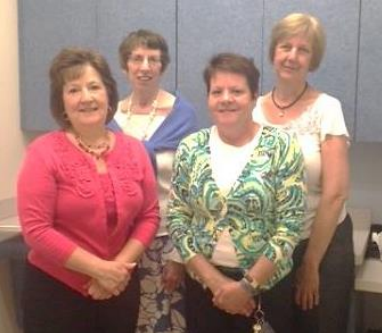A New Standard
By Glenn Coyle
Disability. It’s still a very taboo term and creates a lot of confusion. One University has created a program which seeks to eliminate that confusion and bring the issue of disability to the forefront of their students’ entry into the health care field. The standardized patient program at Villanova University was established in 2010 as a collaborative effort of members of the DVSPA (Delaware Valley Polio Survivors) and the Villanova University College of Nursing graduate program with a small grant from the Association of Standardized Patient Educators. In 2013, it was brought into the undergraduate nursing curriculum. The program uses “real” people with disabilities and puts them in scenarios where nursing students must not only manage a particular health problem i.e. pneumonia, high blood pressure, diabetes, but also determine how or if their patient’s disability can affect their ability to treat them.
Many of us associated with the program came into it with little or no idea of what to expect. One SP Carol Ferguson simply said “Why not?” when presented with the opportunity to participate in the program. Then? The unexpected. “From moment one; it has been an inspirational experience. The staff is devoted to their students getting ‘real world’ experiences while still under the umbrella of instructors who can guide them.” SP Mary Lou Bradley, survivor of a massive stroke, sees an added benefit. “If the students have no exposure to this, they won’t know how to help when they are faced with it later.”
The Professional Team at Villanova: Colleen Meakim, Director, Learning Resource Center; Suzanne Smeltzer, Director, Center for Nursing Research; Susan Markert, Learning Resource Center Assistant; Anita Burry, Academic Support Specialist
Helping students get experience working with PWD’s (people with disabilities) who are not fellow students puts them in a unique position. Many of the nursing students have the advantage of interacting personally with the SP’s. I personally have been amazed with the amount of enthusiasm displayed by the students and their willingness to ask questions, even those that are hard or probing.
Some have even asked interesting and detailed questions regarding our specific disabilities. In an educational environment, where they are encouraged to be curious, we have been asked to describe what (if any) effect our disabilities have on our daily lives; an interesting exercise both for the students and for us.
In some of the student sessions, the SP can go off script; and on occasion we have had the experience of unplanned issues. I myself have experienced a neck stiffness and back spasms during some of these sessions. Also in a particular scenario where I was supposed to be slouched in bed, I also improvised by having my leg hang off the bed, hoping that one of the students would notice that I was in fact very uncomfortable. Many of the students I worked with did pick up on this signal and quickly took the initiative to make me more comfortable. For participants like myself, another interesting aspect of these student scenarios is having the same students work with us in multiple sessions (each one a unique educational opportunity), across multiple years whether it be in a one-on-one or group setting.
The project staff of the College of Nursing headed by Dr. Suzanne Smeltzer, have been researching health issues for people with disabilities for over 20 years and one significant conclusion they made is that the issue of disability is not adequately addressed in nursing texts or teachings. “Real” people with disabilities were added to the SP program to address this issue head on. Overall this entire program has been a learning process for everyone involved.
Certain students have shown how really inexperienced they are when it comes to dealing with people with disabilities. Jim Smith one of the SP’s who utilizes a wheelchair full-time was asked to get onto an examination table. After a few awkward moments, the session continued without Jim needing to move. Jim handled the moment with kindness, and the understanding that this student had an educational experience she would never forget.
Beyond Jim’s situation there have been a few instances where even broaching the subject of disability has been difficult for the students. In more than one of the scenarios I participated in; some of the students have referred to my Spina Bifida as an “illness” or a “disease”. This seems to reinforce the fact that for many of these students this is their first experience with people with disabilities.
The future of this program seems secure especially when you consider how people are committed to its success. I speak for every program participant when I say being a part of the Standardized Patient Program at Villanova University has been one of the most unique and rewarding experiences in my life.


